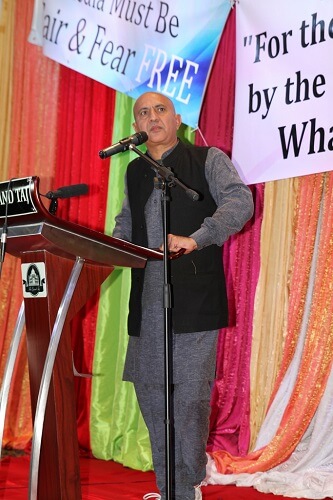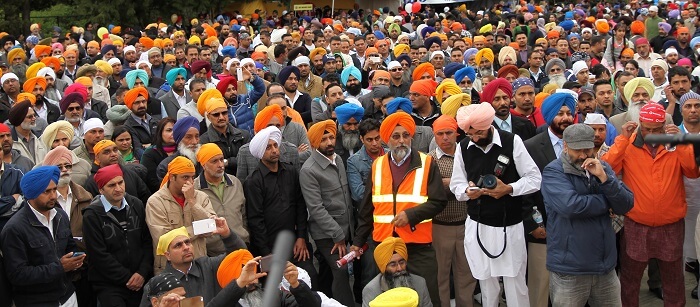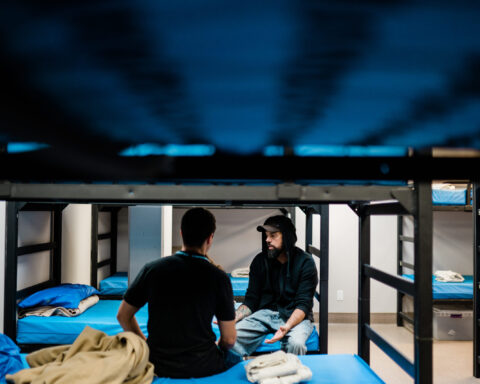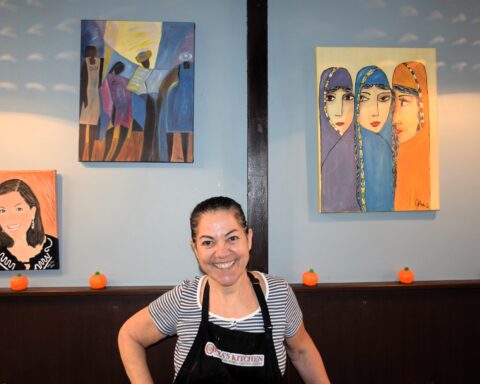The recent firing of an India-based reporter by a Vancouver radio station has thrown a sharp spotlight on the ethnic media in B.C., causing both proprietors and the journalists they employ to once again question the many assumptions they work with.
Reporter Baltej Pannu, a regular contributor to RED 93.1 FM, was recently fired because he named Canadians who were allegedly involved in a drug racket in India — something which he claimed was fact but didn’t have enough documentation to prove it – causing people to come out in huge numbers to protest against the radio station. They called the firing “unfair,” aimed at silencing the voice of a reporter who was, according to them, fighting a war against drugs.
But are these protests attended by thousands in Surrey, B.C. evidence of a growing concern about the direction the ethnic media is taking here in Canada or is it just South Asians being their “emotional” selves, upset about the firing of a reporter they loved?
Simon Fraser University (SFU) professor Catherine Murray, who has studied the B.C. ethnic media market in great detail (in 2007), finds it troubling that all media, irrespective of their audience or their socio-cultural make-up, are covered by the same Canadian Broadcast Standards Council guidelines.
Speaking to New Canadian Media, Prof. Murray said, “although we conducted the study in 2007, we have continued to observe that South Asian media is still very editorial focused and thrives on point-of-view commentary. This is perhaps because controversy forms a part of the political culture of the journalist as well as the listeners. We have observed that South Asians’ views are different from the traditional Canadian perceptions of balance or even different from the Chinese Canadian media which tends to avoid all controversy.”

Public reactions
This reporter talked to many managers as well as hosts in the South Asian radio broadcasting sector and the challenges seem to be the same — lack of experience running media houses, lack of trained professionals and the challenge of keeping up with the audience’s desi expectations. And the Pannu firing speaks to all of these handicaps.
Despite many e-mails, the management of South Asian Broadcasting Corporation, which runs RED 93.1 FM, refused to respond or explain the situation. Pannu, however, was forthright in his defence. “I wasn’t given a chance to explain my side of the story. My employers were so concerned about a lawsuit that they decided to fire me. What kind of a media house does this?” he asked.
He said he knows about libel issues and the boundaries he needs to work with as a reporter, but that the radio station never bothered to explain or tell him what their expectations were from him as a reporter.
“I have always been honest in my reporting. I was never told once that I was crossing the line. But having been threatened by a lawsuit by the people whose names I had taken, the radio station terminated me. I was not even given a chance to prove my case,” said Pannu in an interview from India.
He insisted that a court in India has ordered the release of the list of accused in the drug case and soon everything will be out in the open.
Ethnic media challenges
Gurpreet Singh, a radio host for Radio India Broadcasting on 1600 AM, said that most ethnic radio stations are run by individuals who might not necessarily know what it takes to run a media company. For them, profitability comes first and therefore individual prejudices and biases do creep in and interfere with programming. Unlike other corporate-run and big media houses, there aren’t systems in place for checks and balances and one is almost always working completely alone without having anyone to consult, he said. On the flip side, he pointed out that because ethnic media is much smaller in its reach, it can sometimes take up issues that large media houses would never consider covering.
Singh too was slapped with a defamation suit a few years back, but he said he was thankful that he had the support of his employer.
“My employers told me categorically they were behind me, but having worked in an ethnic media broadcast house, I can never be sure of this backing,” said Singh.
He agreed that the ethnic media scenario in Canada is complicated. “I have worked in more professional environments than this before,” said Singh, referring to his experience back in India, “but here mainstream media didn’t want to hire me, universities didn’t give me admission. So what could I do? I had to rely on the South Asian media for a job even though the money isn’t great and those running the media house don’t really know anything about it. For most of them, it’s like another business.”
“I have worked in more professional environments than this before,” said Singh, referring to his experience back in India, “but here mainstream media didn’t want to hire me, universities didn’t give me admission. So what could I do? I had to rely on the South Asian media for a job even though the money isn’t great and those running the media house don’t really know anything about it. For most of them, it’s like another business.”
Shushma Dutt, who runs RJ 1200, a Canadian Radio-television and Telecommunications Commission (CRTC) licensed radio station which caters to the South Asian population in Vancouver, said that labelling the entire broadcasting community into different categories is a problem.
“I am a Canadian, albeit of a different background. But one of the biggest challenges facing the South Asian media is that we are treated differently. Whether it is by political parties or other Canadian institutions, we are seen (as) separate from conventional media and this attitude encourages the community and its media to live in our little bubble,” said Dutt.
“I don’t really have the time to listen in to what other radio stations are broadcasting, but from what I hear, most of the programming deals with issues from India. There isn’t much effort made by the ethnic media to encourage cross cultural understandings,” said Dutt. “I can’t say for others but at my radio station, we take the CRTC’s ethnic media broadcasting policy very seriously and every attempt is made to encourage cross cultural integration in a responsible manner. We are in Canada and I feel we must concentrate on Canadian issues rather than being stuck with issues that we left behind when we left India.”

No diversity
The current debate begs this question: If broadcasters wish to air programs that discuss South Asian issues from a South Asian perspective, does that breed ethno-cultural ghettos here?
According to Singh, the conventional media has perpetuated this notion. “If the ethnic media is supposed to play the role of integrating new Canadians into the mainstream, they too have the same responsibility. Diversity of voices is completely missing from mainstream media. All they do is highlight the negative stories emerging from the South Asian community and no effort is made to talk of the positives,” said Singh.
Diversity of voices is completely missing from mainstream media.
Many radio listeners agree. “Debates on topics of religion, Indian politics and other social issues are shallow with the prejudice of the hosts clearly reflected in program content. It is somewhat irritating when you listen in to an open line talk show. There are a handful of people, mostly men, who are on all radio stations giving their opinion without facts on every possible topic,” said a Surrey-based doctor who didn’t want to be named.
According to experts and some broadcast managers, this largely happens because there aren’t many professionally trained journalists in the South Asian media. “I can count on my fingertips how many trained and experienced journalists or radio hosts our community has, and since there aren’t too many available to hire, we have to depend on in-house training, but it’s not the same,” said Dutt.
Need for training
Similarly, Jas Gill, programming director at 1550 AM Sher-E-Punjab radio said that the biggest challenge that she faces is getting young, trained professionals. “It’s quite a challenge. We have to make do with what we have but at our station we are very clear that all staff who go on air have to comply with both Canadian Broadcast Standard Council guidelines as well as those of the Federal Communications Commission (FCC).”
Dr. Jasbir Singh Romana, host of a current affairs program on 1550 AM Sher-E-Punjab, agreed that since he is not a trained journalist by profession, he took it upon himself to thoroughly understand the code of conduct and ethics. “For every talk show host, flashing phone lines is an indication that he is being listened to, but at the same time, I understand the responsibility that I have and therefore am careful by avidly researching the topics I talk about or inviting experts to discuss topics I don’t know much about,” said Romana.
I understand the responsibility that I have and therefore am careful by avidly researching the topics I talk about or inviting experts to discuss topics I don’t know much about
Romana said the reason South Asian radio stations lean towards discussing issues from Punjab or India is because radios and talk shows provide an easily-accessible platform for new Canadians who find themselves alone and isolated in a new country. “Having said that, I also tend to believe that it is the responsibility of the host to play a key bridging role between new Canadians and mainstream society and maintaining this balance of being popular and being right can sometimes be challenging,” he said.
So what’s the future for South Asian media in Canada? Opinions about this also vary. While Prof. Murray’s study said the community needs to have more round tables among journalists and community leaders to discuss the evolving community’s standards, Singh said that the future of South Asian media depends largely on immigration trends in the coming years. Dutt argued that nothing will change and firings and defamation cases will abound unless the community changes its attitude and adopts Canada and its systems completely.




